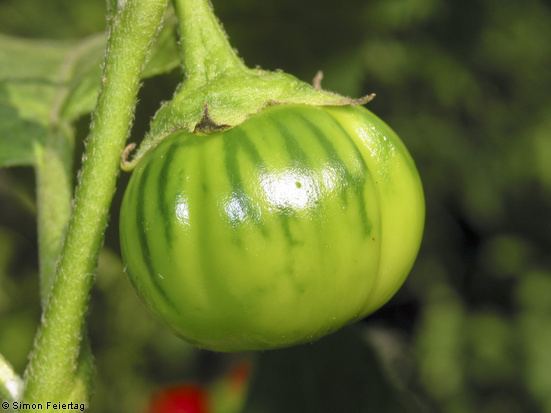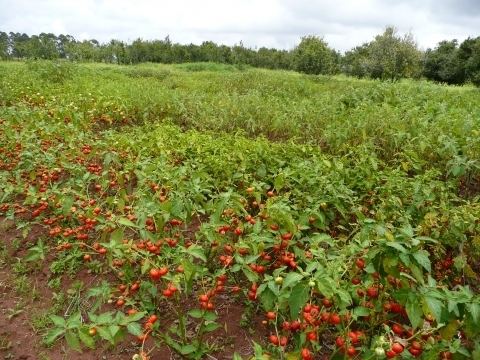Rank Species | Higher classification Solanum | |
 | ||
Similar Solanum, Solanum macrocarpon, Nightshade, Solanum anguivi, Solanum incanum | ||
Solanum aethiopicum l jil jiloeiro bitter tomato solanaceae
Solanum aethiopicum, the bitter tomato, Ethiopian eggplant (ባሚያ), or nakati, is a fruiting plant of the genus Solanum mainly found in Asia and Tropical Africa. It is also known as Ethiopian nightshade, garden eggs, and mock tomato. It is a popular vegetable in north-east India, and is known as khamen akhaba in Manipuri and samtawk in Mizo. These names are a result of its varied morphology, with ripe fruit often looking like a cross between an eggplant and a tomato, which are also from Solanum. In fact, the Ethiopian eggplant was so much confused with the ordinary eggplant that this was considered by some a variety violaceum of S. aethiopicum.
Contents
- Solanum aethiopicum l jil jiloeiro bitter tomato solanaceae
- Solanum aethiopicum 13227
- Uses
- Cultivation
- Selected cultivars
- References

Ethiopian eggplant may have originated from the domestication of Solanum anguivi. The scarlet eggplant, also known as Gilo or jiló, was long held to be a distinct species (S. gilo) but is nowadays generally considered to be a cultivar group of S. aethiopicum.

Solanum aethiopicum 13227
Uses

The leaves of Solanum aethiopicum are eaten as a leaf vegetable and are actually more nutritious than the fruit.

The highly variable fruit of the plant is eaten both raw and cooked and is becoming more popular as a cultivated crop. These fruits are usually harvested while still green, before the skin becomes thick. The bitterness depends on the levels of saponin it contains, some with a sweet flavor and others very bitter. When the berries mature, they turn bright red because of high carotene content.
Solanum aethiopicum is used as an ornamental in Asia.

In Nigeria, Igbo people use it as a substitute for kolanut especially for those who do not want to chew kolanut. In which case it is used to welcome guests at home or before resumption of a traditional ceremony.

Garden egg as it's commonly known in Nigeria is sometimes used to make a tomato based sauce which can be used to eat yam
Cultivation

Currently there is a large movement towards increased cultivation of Solanum aethiopicum in West Africa. It grows all year long and can produce high fruit yields. However, low germination rates are an obstacle to wider cultivation.
The only place where S. aethiopicum is grown to a significant extent in Europe lies in South Italy, to be precise in Rotonda in the Basilicata, where this plant is of some commercial importance. Probably it was introduced by veterans returning from East Africa after the colonial war in the late 19th century. Italian Farmer
